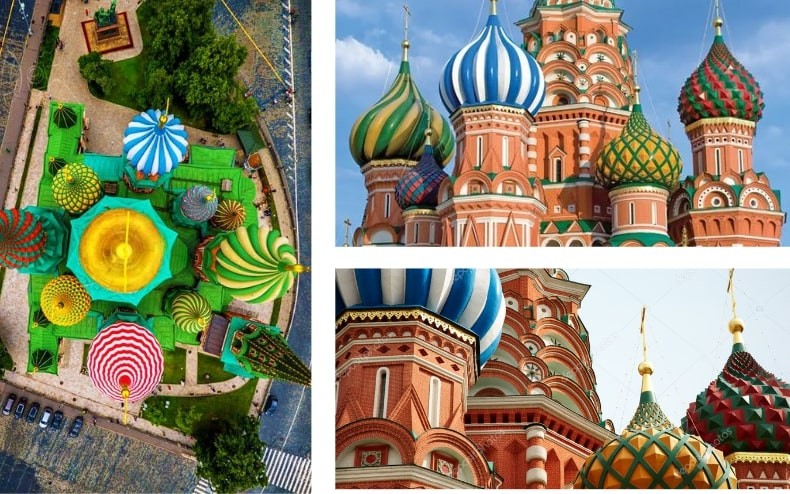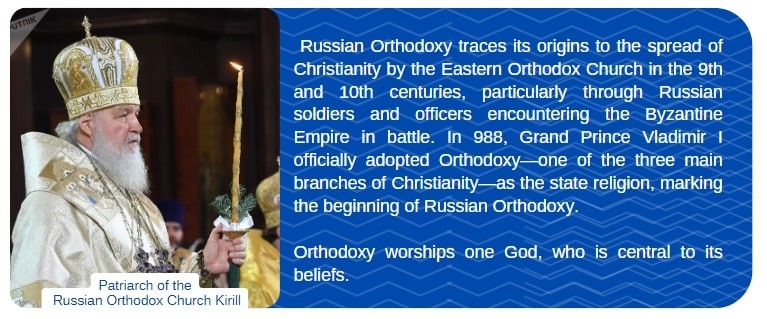St. Basil's Cathedral: A Pinnacle of Religious and Secular Architecture
August 30, 2024 | 11:05
Situated in the heart of Red Square in Moscow, St. Basil's Cathedral stands out like a mystical, radiant castle. It attracts millions of visitors each year due to its sublime combination of religious architecture and secular artistry, blending seamlessly and profoundly.

Located in the heart of Moscow's Red Square, St. Basil's Cathedral stands out like a mystical, radiant castle, attracting millions of visitors each year. Its sublime fusion of religious architecture and secular artistry creates a harmonious and profound blend that captivates all who behold it.
|
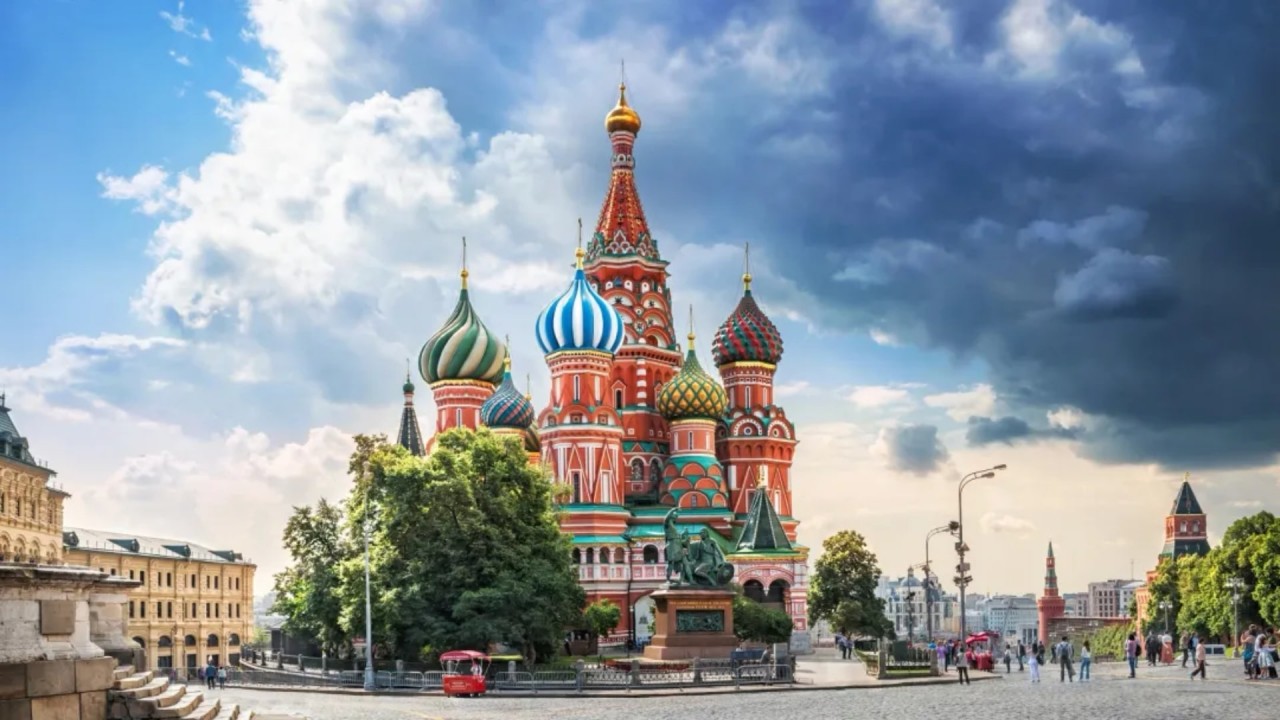
St. Basil's Cathedral is distinguished by its nine towers with onion domes and vibrant colors. (Photo: Baturina Yuliya/Shutterstock/Fotodom)
|
|
S t. Basil's Cathedral resembles an enchanting painting with its onion-shaped domes dazzling in shades of red, green, blue, yellow, and white. These colors harmoniously represent the elements of earth, water, fire, and air, which are fundamental aspects of life in ancient Russian culture.
|
|
When viewed from above, the cathedral resembles a radiant eight-pointed star, with eight towers surrounding a central one. The number eight symbolizes the days following Jesus' resurrection according to the ancient Jewish calendar. In Russian Orthodoxy, the veil of the Virgin Mary also bears three eight-pointed stars, further emphasizing the cathedral's spiritual significance.
|
|
Inside St. Basil's Cathedral, the space is divided into nine chapels, each serving a distinct purpose. All are dedicated to worship and the veneration of saints or significant events in the history of the Russian Orthodox Church, commemorating Russia's crucial military victories.
Each chapel is built on its own foundation, connected by narrow corridors and staircases, giving the impression of navigating a labyrinth. The central chapel, dedicated to the Intercession of the Theotokos, stands taller than the others. Its walls are adorned with murals depicting biblical stories and the lives of saints.
|
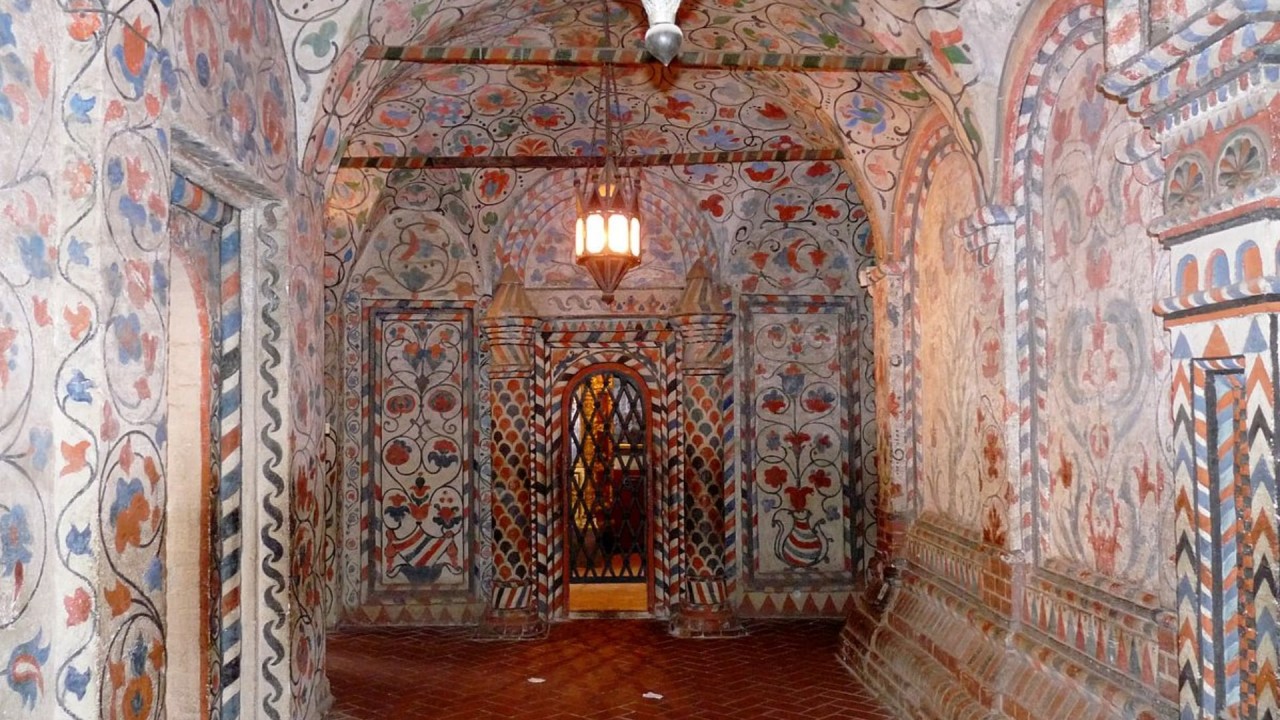
The decoration inside the church. (Photo: Wikimedia Commons)
|
|
The interior of St. Basil's exudes a solemn, tranquil atmosphere. The narrow corridors and small chapels create an intimate and private space, reserved for prayer. Here, visitors can admire icons from the 16th to 19th centuries, portraits, landscapes, church artifacts, and many valuable relics from the time of Ivan IV.
The ceilings and domes are intricately designed with hand-painted patterns reflecting Byzantine and ancient Russian art. Byzantine art, originating from the Eastern Roman Empire, is known for its use of religious icons, mosaics, and domed architecture. The round domes and cross-shaped structure of St. Basil's are characteristic of Byzantine architecture, symbolizing heaven and divinity, which is clearly evident in the cathedral's symmetrical design.
|
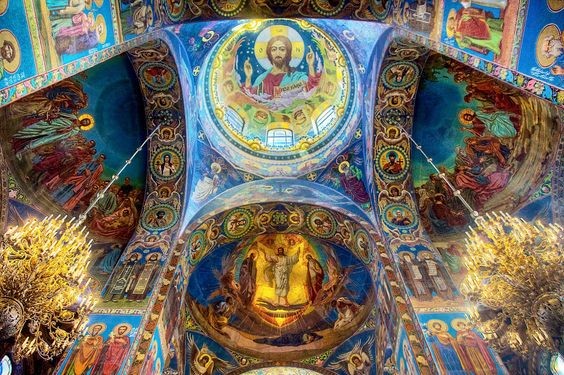
Inside the onion-shaped domes at St. Basil's Cathedral. (Photo: Mike Ledwith (@mike_ledwith))
|
|
The most distinctive feature of ancient Russian art at St. Basil's is its onion-shaped domes. Each dome bears a unique color and pattern, believed to symbolize the holy flame. The architects skillfully combined elements of Byzantine art with innovations tailored to Russian culture and aesthetics.
While the cathedral mainly features vibrant colors and traditional Russian motifs, the combination of colors and religious symbols reflects the influence of Byzantine art. The use of gold and green colors in the walls and domes also signifies the adoption of Byzantine style in Russian art.
|
|
According to legends preserved at the State Historical Museum of Russia, St. Basil's Cathedral was built by Tsar Ivan IV (also known as Ivan the Terrible) to commemorate Russia's victory over the Kazan Khanate.
|
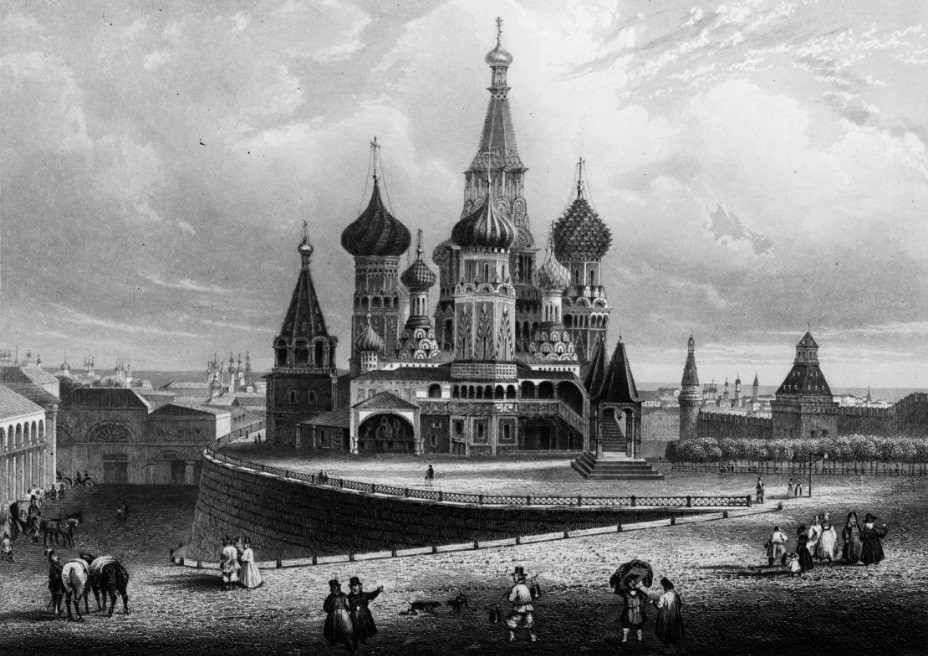
An engraving of St. Basil's Cathedral in around 1700. (Photo: Hulton Archive/Getty Images)
|
|
Historical records indicate that St. Basil's Cathedral faced near destruction twice. According to legend, when Napoleon's army occupied Moscow in 1812, he was so impressed by the cathedral's beauty that he intended to transport it to France. However, realizing this was impossible, he ordered its destruction. His soldiers placed explosives around the cathedral, but a sudden heavy rain extinguished the fuses, saving the cathedral from demolition.
In the 1930s, Lazar Kaganovich, a close associate of Joseph Stalin (General Secretary of the Communist Party of the Soviet Union from 1922 to 1952), proposed demolishing St. Basil's Cathedral to create space for military parades on Red Square. Although Stalin initially dismissed the idea, the demolition was still considered. It was architect Petr Baranovsky who fiercely interfered, even threatened suicide if the cathedral was destroyed. In the end, Stalin decided to preserve the cathedral.
|
Phuong Nguyen



